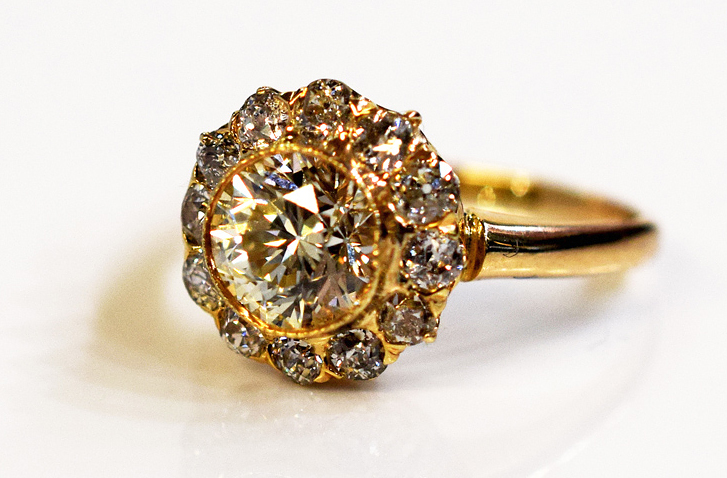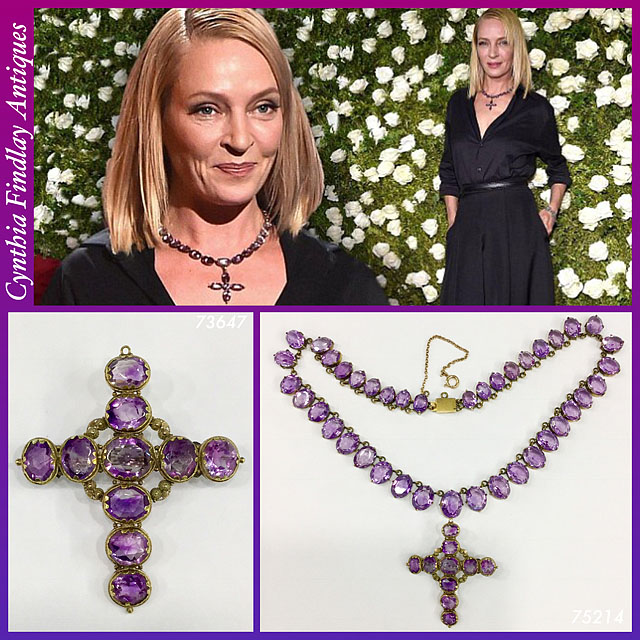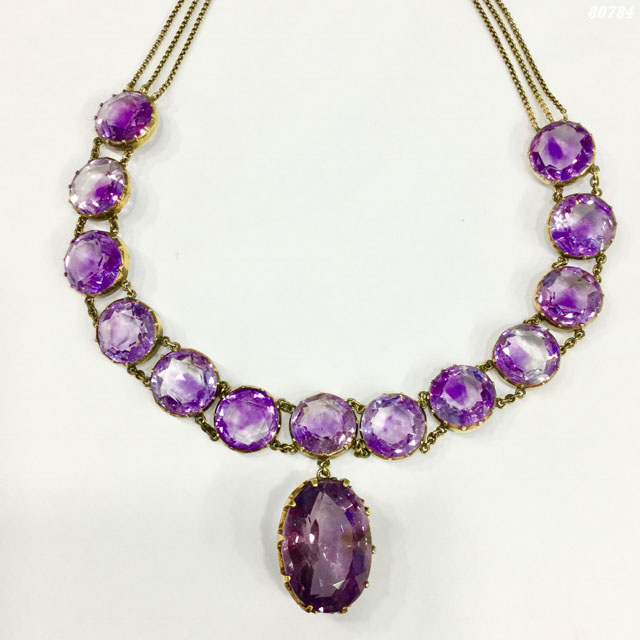Appointment Only.
Your Account
Page Content Top
Page Content
Blog CF - Fine Jewellery & Antiques
How To Find The Ring For The One - 2017-07-07
How To Find 'The Ring' For 'The One'
You've found 'the One' and now it's time to find 'the Ring'. As you begin engagement ring shopping it's easy to become overwhelmed by the vast array of choices. Instead of going to a jewelry store in a mall full of hustling people and searching for the latest- and likely most expensive- rings, why not consider purchasing a vintage ring? Antique and Vintage rings have timeless and classic looks, and in many cases are more affordable than similar modern rings.
Here are a few reasons why you should choose a vintage engagement ring:
Craftsmanship: One of the hallmarks of vintage rings is their exceptional craftsmanship. From first look it's easy to see the time and care that a highly skilled jeweler spent crafting a vintage or antique ring. To commission a ring today with the same level of skill and quality as an Edwardian, Vintage or Art Deco ring would cost much more than finding the perfect piece that has already been lovingly created.
Uniqueness: The engagement ring that you purchase should be a show-stopping, one of a kind piece that stands out from the crowd as much as the woman who will wear it. There's no better way to ensure her ring is unique than to purchase an antique engagement ring. The age of these rings and the likelihood that they were in fact handcrafted means that you'll very rarely see two identical rings.
Symbolism: An engagement ring is a symbol of a commitment that will last forever, and a sign that the marriage you are proposing will be timeless. What better way to symbolize this enduring bond of love than with a timeless piece of jewellery? A vintage engagement ring shows the world that you have a love that transcends time and like vintage jewellery it will never go out of style.
The Loonie Is How Old? - 2017-06-30
The Loonie Is How Old?
On the day before Canada's 150th Birthday we celebrate the Birthday of another Canadian icon: the Loonie. June 30th, 2017 marks the 30th year since the Loonie entered circulation in 1987.
This iconic, brass plated steel coin was introduced to phase out the dollar bill in Canada and became affectionately known as the Loonie because of The design of the Common Loon that it features. The name 'Loonie' was so popular that the Canadian Mint legally secured rights to the name in 2006.
The Loon has become a Canadian symbol thanks to the design by Robert Ralph Carmichael, but the dollar almost displayed a very different image. The original design for the Loonie featured a French explorer and an Indigenous man in a canoe. On the way to production the plates disappeared and out of fear of counterfeiting a new design was chosen for the Canadian dollar coin.
The Loon is a majestic water bird that mainly lives in Northern Canada and Northerly parts of the United States. These black and white beauties are diving birds that live off fish and crustaceans. The Loon's sight aids in their underwater hunting so they prefer to live on clear lakes such as in the Muskokas. The beautiful, plaintive cry of the Loon can often be heard echoing across lakes in Canada's cottage country.
Loons have often been seen as a romantic bird because they take a single partner to mate with, co-incubate their eggs and both parents take responsibility for the 1-2 chicks born each season. If a female loon loses her mate she may eventually take another partner during her up to 30 year lifespan.
A majestic and noble symbol of the Canadian North, the Loon can be found in many collectible ways in addition to the Loonie. Carved wooden loons are popular choices for the cottage chic look. Loon paintings make a lovely addition to the Canadian household. To shop our selection of Vintage Loon themed items come by our storefront at 284 King St W.
Happy 30th Birthday Loonie! And a Happy 150th Birthday to you Canada!
For some other Great Canadian ideas check out our Canadian Collection by clicking here.
Uma Therman's Stunning 19th Century Amethyst Rivière Necklace - 2017-06-21
Uma Therman's Stunning 19th Century Amethyst Rivière Necklace
In honor of Uma Therman's stunning 19th Century Amethyst Rivière necklace that sparkled on the red carpet of the 71st Annual Tony Awards on June 11th we decided to take a look at this timeless necklace style.
Wondering what a rivière is? The Rivière necklace received it's name from the French word for River, because the faceted gems of this necklace flow gracefully around the neck of the wearer. Stones in a Rivière necklace are individually set and often graduating in size. Rivière necklaces are typically shorter fitting necklaces ranging from 14-16 inches in length. When the Rivière style was first developed in the Late 17th-Early 18th century the stones were set with closed backs, as the style became more popular this was adapted to open settings to allow more light and enhance the smoothly flowing, shining river effect. Stones set in a Rivière necklace are the same shape and the same size (unless there is a slight graduation to the center of the necklace), and on some of the more ornate examples a pendant hangs in the center.
The rivière is a timeless setting that has been popular long after the Georgian period of its invention, and Uma Therman's outfit Sunday is a great example of how the Riviere's classic lines dazzle and enchant even as part of modern outfits. We were inspired to capture images of some of our favorite Rivière necklaces from the Cynthia Findlay collection.
For more info click here.



